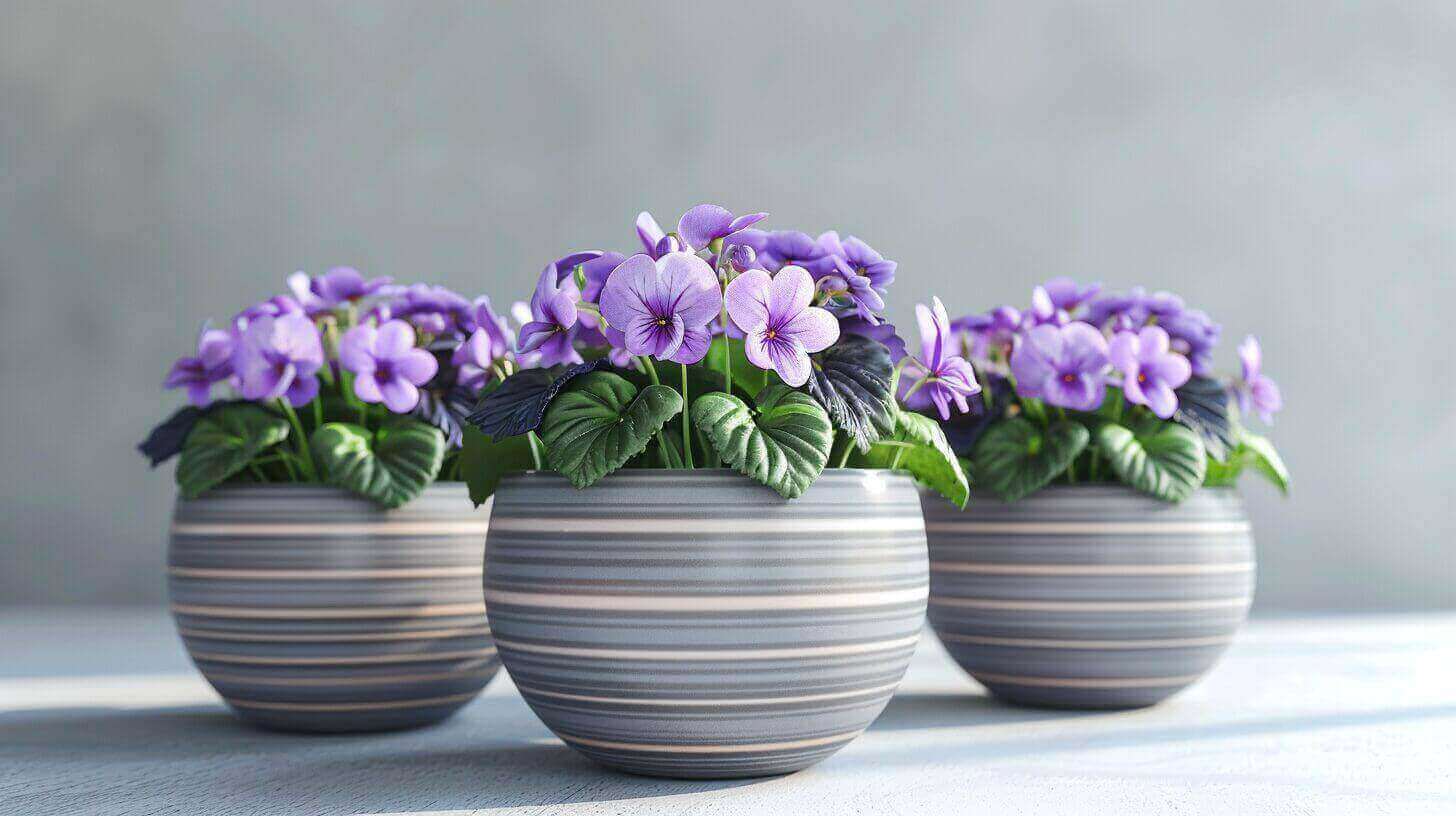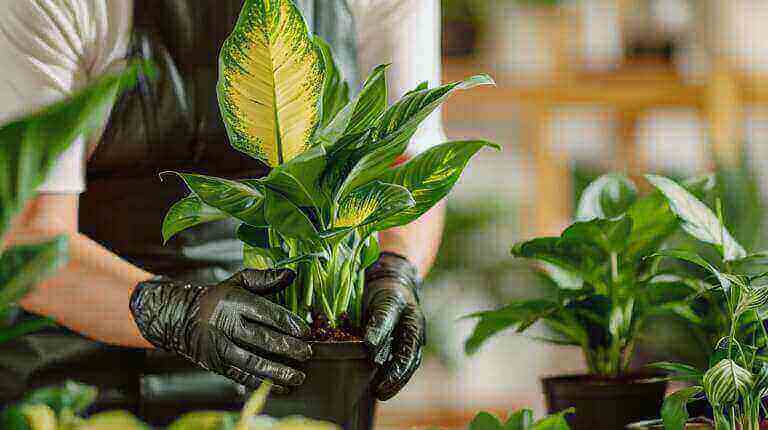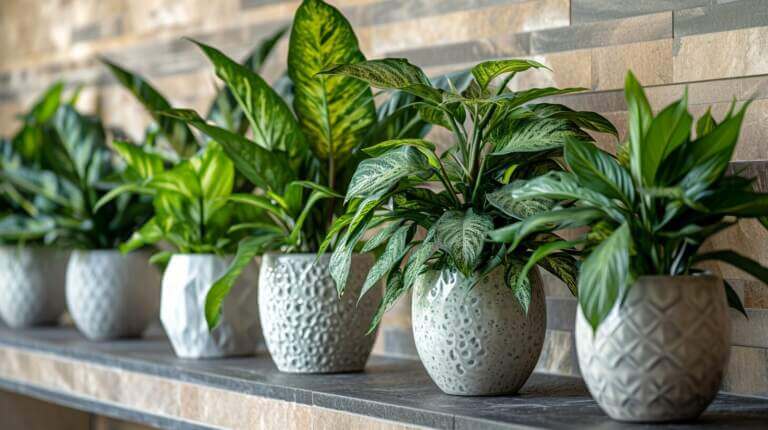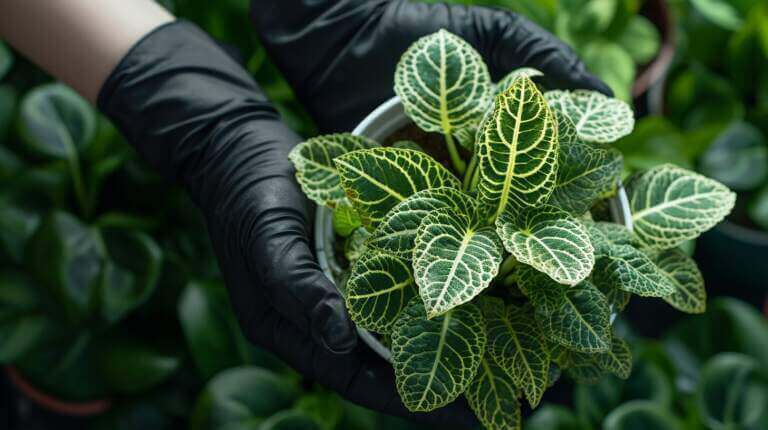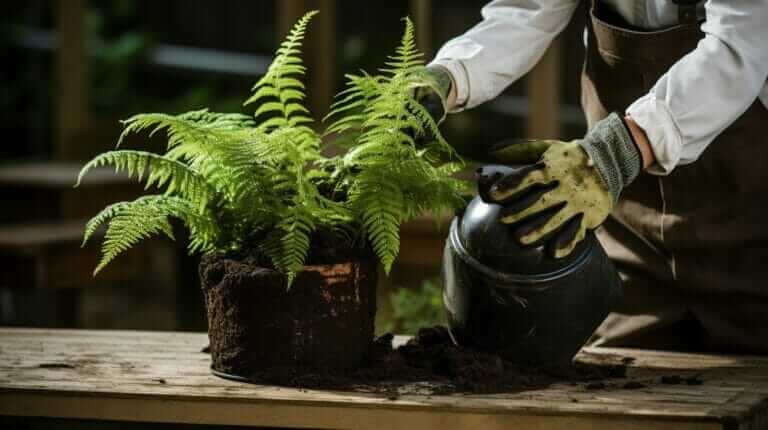Demystifying African Violet Houseplant Care: Light, Water, and Soil Needs
African violets, also known as Saintpaulia ionantha, are popular indoor plants known for their beautiful foliage and delicate flowers. While they may seem finicky to grow, with the right care, they can thrive and bloom throughout the year. In this section, we will explore the light, water, and soil requirements for African violets.
Key Takeaways:
- African violets require moderate to bright light, preferably filtered and indirect, to thrive and bloom.
- Water African violets from the bottom to avoid getting water on their leaves and causing spotting and rot.
- Use well-draining soil specifically formulated for African violets to ensure proper moisture retention and drainage.
- Feed African violets with a high-quality fertilizer designed for their specific needs during active growth periods.
- Maintain proper air circulation, humidity levels, and perform regular inspections for pests to ensure the health of African violets.
African Violet Light Requirements
African violets, like all plants, have specific light requirements to help them thrive and bloom. Understanding these requirements is crucial for successfully growing these beautiful indoor plants.
Types of Light
African violets thrive in moderate to bright light conditions. When growing them indoors, it’s essential to place the plant in a location that receives filtered, indirect light. East-facing windows are ideal, as they provide gentle morning sun. In the warmer months, northeast light is preferred, while southern and western light can be acceptable if it is filtered through a sheer curtain.
While African violets need light to grow, it’s important to avoid direct sunlight, as it can potentially burn their delicate leaves. If you’re growing them indoors and don’t have access to natural light, consider using artificial lights or grow lights to provide the necessary light spectrum and intensity. These lights can be used to supplement natural light and ensure African violets receive the recommended 12 to 14 hours of good light per day.
Lighting Tips
Here are a few tips to help you provide the right lighting conditions for your African violets:
- Rotate your plants regularly to ensure even light exposure on all sides.
- Keep your plants at least six inches away from windows to prevent leaf damage from temperature extremes.
- Monitor the light levels and adjust the placement of your African violets accordingly.
- Consider using a light meter to measure the light intensity and ensure optimal conditions.
| Lighting Type | Pros | Cons |
|---|---|---|
| Natural Light | – Provides essential light spectrum – Free | – Can be inconsistent – Risk of direct sunlight |
| Artificial Light/Grow Lights | – Consistent light source – Adjustable intensity – Can supplement natural light | – Requires initial investment – Need to monitor light duration |
African violets require moderate to bright light conditions. It’s important to find the right balance and provide the correct lighting conditions to ensure healthy growth and vibrant blooms.
Watering African Violets Indoor Plant
Adequate watering is crucial for the health and vitality of African violets. These charming plants prefer to be watered from the bottom to avoid getting water on their delicate leaves, which can result in spotting and rot. Here’s a step-by-step guide on how to water your African violets from the bottom:
- Fill a tray or saucer with water, ensuring that it is deep enough to reach the bottom of the pot.
- Place the pot in the tray, allowing the soil to absorb the moisture through the drainage holes.
- Leave the pot in the water for approximately one hour or until the top layer of soil feels moist to the touch.
- After watering, remove the pot from the tray and allow any excess water to drain away.
Remember to empty the tray after watering to prevent the roots from sitting in standing water, which can lead to root rot. It’s essential to strike a balance between keeping the soil slightly moist and avoiding overwatering, which can cause the plant to suffer. Check the top inch of soil regularly, and water only when it feels dry to the touch.
Self-watering pots can simplify the watering process and help maintain consistent moisture levels. These pots contain a reservoir at the bottom that gradually releases water into the soil as needed. They are an excellent option for busy individuals or those who may have difficulty determining when to water their African violets.
| Watering Tips for African Violets: |
|---|
| Water from the bottom to avoid wetting the leaves. |
| Ensure the soil absorbs moisture for about an hour before removing the pot from the tray. |
| Keep the soil slightly moist but not soggy. |
| Empty the tray after watering to prevent waterlogged roots. |
| Avoid using water treated with water softeners, as the added salts can be harmful. |
African Violet Soil Requirements
African violets require a specific type of soil that is well-draining and replicates the loose, rich soil found in their native habitat. Using the right soil is crucial for the health and vitality of these delicate plants. A commercial African violet potting mix, such as the highly recommended Black Gold African Violet potting mix, is the ideal choice.
This specially formulated potting mix provides the perfect balance of moisture retention and drainage, ensuring that your African violets receive the necessary nutrients without the risk of waterlogged roots. Regular potting soil, on the other hand, is too heavy and can lead to root rot and other issues.
When repotting your African violets, it’s important to use a pot with good drainage to prevent water from accumulating and causing damage to the roots. Additionally, keeping the plants slightly potbound can actually be beneficial, as it encourages blooming. Repotting once a year with fresh soil will help replenish nutrients and provide the necessary support for healthy growth.
Table: Comparison of African Violet Potting Mixes
| Potting Mix | Main Ingredients | Moisture Retention | Drainage | Nutrient Content |
|---|---|---|---|---|
| Black Gold African Violet Potting Mix | Sphagnum peat moss, perlite, vermiculite | High | Excellent | Enriched with essential nutrients |
| Regular potting soil | Various organic matter, such as compost and peat moss | Variable | Poor to moderate | May require additional fertilization |
| Homemade African Violet Mix | Sphagnum peat moss, perlite, vermiculite, compost | Variable | Moderate | Depends on the quality of ingredients |
Key Points:
- African violets require well-draining soil that replicates their natural habitat.
- A commercial African violet potting mix, like the Black Gold African Violet potting mix, is highly recommended.
- Regular potting soil is too heavy for African violets and can lead to root rot.
- When repotting, use a pot with good drainage and consider keeping the plants slightly potbound.
- Repotting once a year with fresh soil provides essential nutrients and supports healthy growth.
African Violet Fertilizer and Nutrients
Proper nutrition is essential for the care of African violets. These plants require a balanced fertilizer to provide the necessary nutrients for healthy growth and blooming. Using a high-quality fertilizer specifically designed for African violets can help meet their nutritional needs.
Regular or specialty fertilizers can be used during the active growing season, which is typically from early spring to late fall. It’s important to follow the package instructions for the correct application rates and frequency. Some growers prefer the “weekly weakly” approach, diluting the fertilizer to one-quarter strength and applying it once a week. This method helps prevent over-fertilization and promotes stronger growth.
In addition to fertilizer, the choice of potting mix also plays a crucial role in providing the necessary nutrients for African violets. Using an African violet potting mix, such as the popular Black Gold African Violet potting mix, can ensure a well-balanced combination of organic materials, perlite, and peat moss. This type of potting mix helps promote healthy root development and nutrient uptake.
| Fertilizer Type | Application Method | Frequency |
|---|---|---|
| Regular Fertilizer | Dilute to recommended strength and apply directly to soil | Once every 2-4 weeks during the growing season |
| Specialty Fertilizer | Dilute according to package instructions and apply directly to soil | Once every 2-4 weeks during the growing season |
| African Violet Potting Mix | Use the potting mix when repotting or planting new African violets | Repot annually or as needed |
By providing African violets with the right fertilizer and a nutrient-rich potting mix, you can ensure their overall health and promote vibrant blooms. Remember to monitor the condition of your plants and adjust the fertilization routine as needed to meet their specific requirements.
Maintaining African Violet Health
To keep your African violets healthy, there are a few key factors to consider. First and foremost, ensure that your plants have proper air circulation. Overcrowding can lead to stagnant air, which can promote the growth of mold and mildew. By providing good ventilation and avoiding overcrowding, you can help prevent these common issues.
Humidity is another important aspect of African violet care. These plants thrive in a moderate humidity level of around 50%. To maintain the right moisture balance, you can place a tray of water near your plants or use a humidifier. This will help prevent the drying of flower buds and promote healthy growth.
Choosing the right potting soil is crucial for African violets. They require well-draining soil that replicates their native habitat. Opt for a specialized African violet potting mix, like Black Gold African Violet potting mix, which provides excellent moisture retention and drainage. This will ensure that your plants have the ideal growing conditions.
Finally, regular repotting is essential for the long-term health of your African violets. Repotting once a year with fresh soil will replenish nutrients and support healthy growth. Additionally, you can propagate your African violets through leaf cuttings or crown division. Leaf cuttings involve taking a healthy leaf and placing it in moist soil, while crown division is recommended for older plants with multiple crowns. These propagation methods will allow you to expand your collection and keep your plants thriving.
FAQ
What kind of lighting do African violets need?
African violets require moderate to bright, filtered, indirect light. East-facing windows with gentle morning sun are ideal. Artificial lights or grow lights can be used to supplement natural light.
How should I water African violets?
Water African violets from the bottom by placing the pot in a tray of water for about an hour. Drain any excess water before returning the plant. Keep the soil slightly moist but not soggy and water when the top inch of soil feels dry to the touch.
What type of soil do you use for African violets?
African violets require a well-draining soil that replicates their native habitat. A commercial African violet potting mix, like Black Gold African Violet potting mix, is recommended.
Do African violets need fertilizer?
Yes, African violets require proper nutrition for healthy growth. Use a high-quality fertilizer designed specifically for African violets. Regular or specialty fertilizers can be used according to package directions. Some growers prefer to feed their African violets “weekly weakly,” diluting the fertilizer to one-quarter strength and applying it once a week.
How do I maintain the health of African violets?
Ensure proper air circulation and avoid overcrowding. Maintain a moderate level of humidity around 50%. Regularly repot using well-draining soil and provide adequate nutrition through fertilizer. Inspect for pests and treat infestations as necessary.

